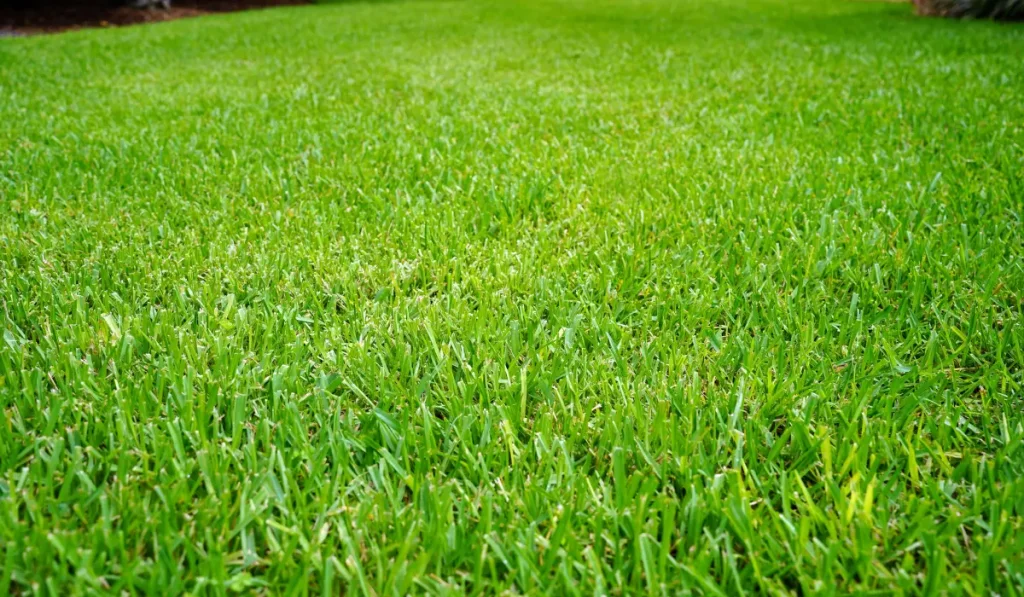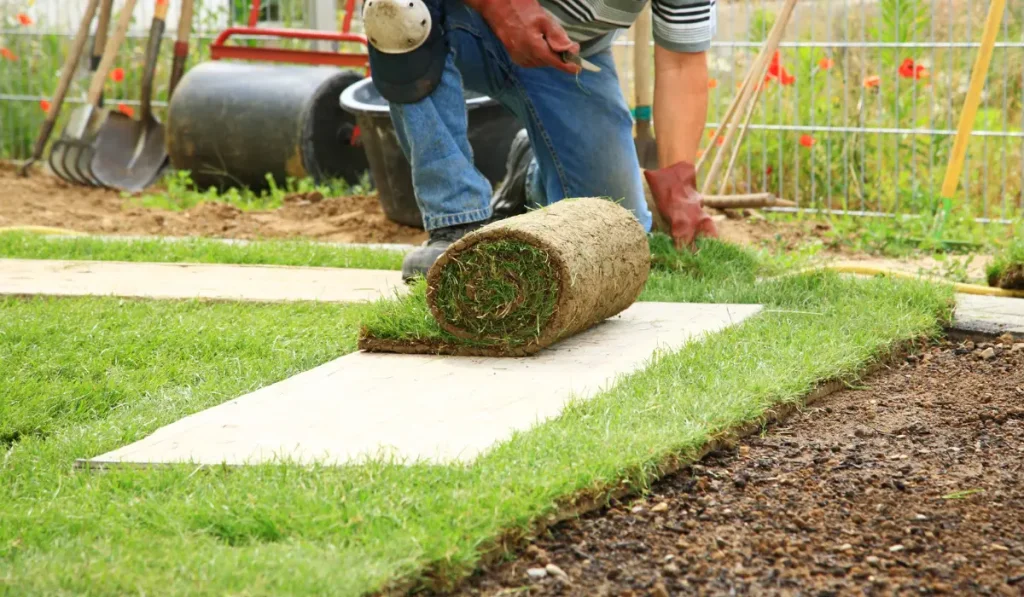Ever wondered why lush, green lawns have that certain charm? St. Augustine grass might be the secret behind those pristine, vibrant yards. It’s known for its thick, carpet-like texture and ability to thrive in hot climates.
Keep reading to discover tips and tricks for achieving the perfect St. Augustine grass lawn.
Key Takeaways
- St. Augustine grass thrives in warm climates, ideal for regions like California, Florida, and Texas.
- Known for its shade tolerance and drought resistance, it provides a lush, green lawn with moderate watering.
- Maintenance can be demanding, requiring frequent mowing and vigilance against pests and diseases.
- While versatile, its growth is limited to warm, humid areas, making it unsuitable for cooler climates.
What Is St. Augustine Grass?

St. Augustine grass is a popular warm-season turfgrass that thrives in regions with high temperatures and full sun, such as Florida and Texas.
While it’s common in the southern United States, it can also be grown in other warm climates, including parts of California.
Ideal Growing Conditions
St. Augustine grass is known for its adaptability in diverse landscaping scenarios. Including its Palmetto and Raleigh varieties, it thrives under conditions that enhance its growth and sustainability.
Here’s an overview of these conditions:
| Ideal Conditions | Specification |
|---|---|
| Climate | Warm, prefers high temperatures |
| Sunlight | Full sun to partial shade |
| Soil Types | Sandy to clayey, must be well-drained |
| Growing Season | Late spring through summer |
| Watering Needs | Regular during the growing season, avoid waterlogging |
Pros of St. Augustine Grass
Drought Resistance
St. Augustine grass has moderate drought-tolerance, ideal for areas with occasional dry conditions. However, it still requires regular watering during prolonged dry periods to maintain its lush appearance.
Drought-resistant varieties, like Seville, are particularly noteworthy. Their ability to survive dry spells with moderate watering can save effort and resources.
Shade Tolerance
St. Augustine Grass is also renowned for its shade tolerance. If you have areas in your lawn that receive minimal sunlight, it will likely thrive there. The grass can grow well, even under large trees or in areas shaded by buildings.
The grass’s broad, flat blades help capture limited sunlight more efficiently. This makes it suitable for sunny and partially shaded lawns.
Cons of St. Augustine Grass
Maintenance Demands
Maintaining St. Augustine grass can be labor-intensive. It grows vigorously during the spring and summer, requiring frequent mowing to keep it looking tidy. Also, its dense growth can lead to thatch buildup, necessitating regular dethatching.
Pests and Diseases Risks
St. Augustine grass is vulnerable to various pests and lawn diseases. Chinch bugs, a common pest, can cause significant damage by sucking the sap from the grass blades. Grubs can infest the root system, weakening the grass.
Climatic Limitations
St. Augustine grass is not universally adaptable. It thrives in warm, humid climates but falters in cooler or drier regions. So, it has limited utility for homeowners in such areas, reducing its geographic suitability.
Maintenance Tips for St. Augustine Grass
Regular Watering
St. Augustine grass thrives with consistent watering. Deep, infrequent watering is ideal, typically once or twice weekly. This practice strikes the right moisture balance and prevents stress or damage from drought or excess moisture.
Early morning watering is recommended as it reduces evaporation. Aim to provide about 1 to 1.5 inches of water per week, factoring in any rainfall.
Proper Mowing
Mowing St. Augustine grass correctly is vital for its health and aesthetic appeal. This grass type thrives when cut to a specific height and frequency.
To promote strong root development and a dense, lush turf, maintain a mowing height between 2.5 and 4 inches.
Depending on the growth rate and local climate conditions, mowing should be done every 7 to 14 days during the growing season.
Fertilizing
Proper fertilization is crucial for keeping St. Augustine grass lush and vibrant. To tailor the nutrient application effectively, conduct a soil test to determine its specific needs.
Start by applying a balanced turf fertilizer with elements like nitrogen and potassium during the spring green-up. Depending on the soil test and soil pH, more or less fertilizer may be needed. So, apply three to four times throughout the growing season so the grass receives the right nutrients at optimal times.
Weed Control
Weeds can compete for nutrients and water, affecting growth and health. So, weed control is integral to lawn care for St. Augustine grass.
Applying pre-emergent herbicides in early spring can prevent weed seeds from germinating. On the other hand, post-emergent herbicides are effective for dealing with existing weeds.
For smaller infestations of less than 100 square feet, manual removal of weeds like crabgrass is often enough.



